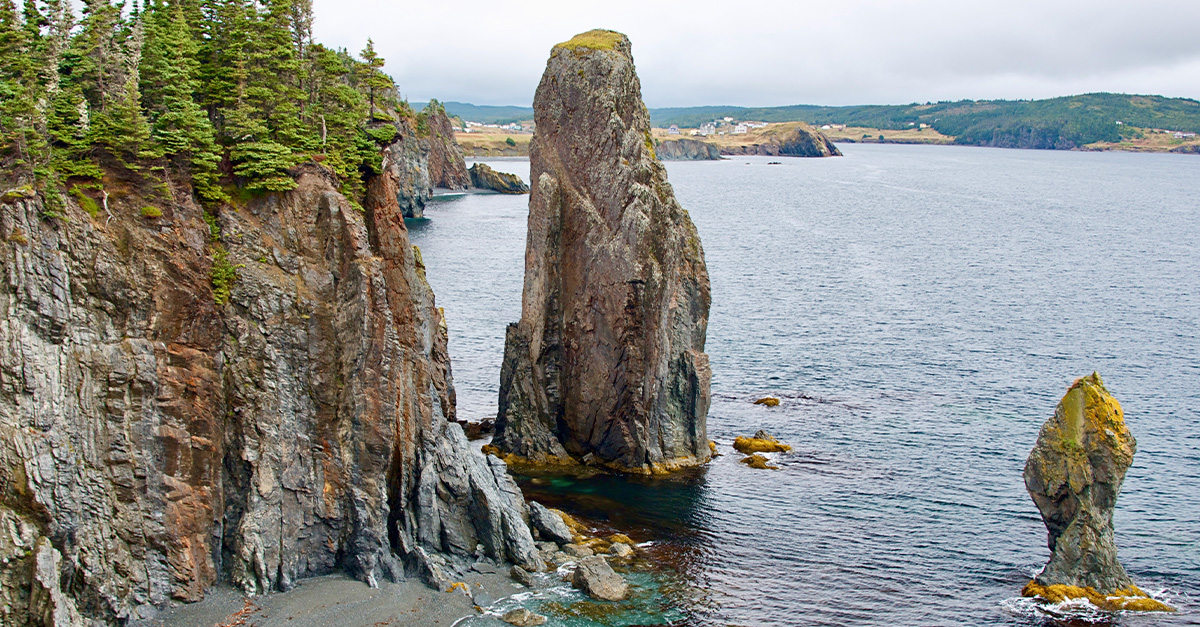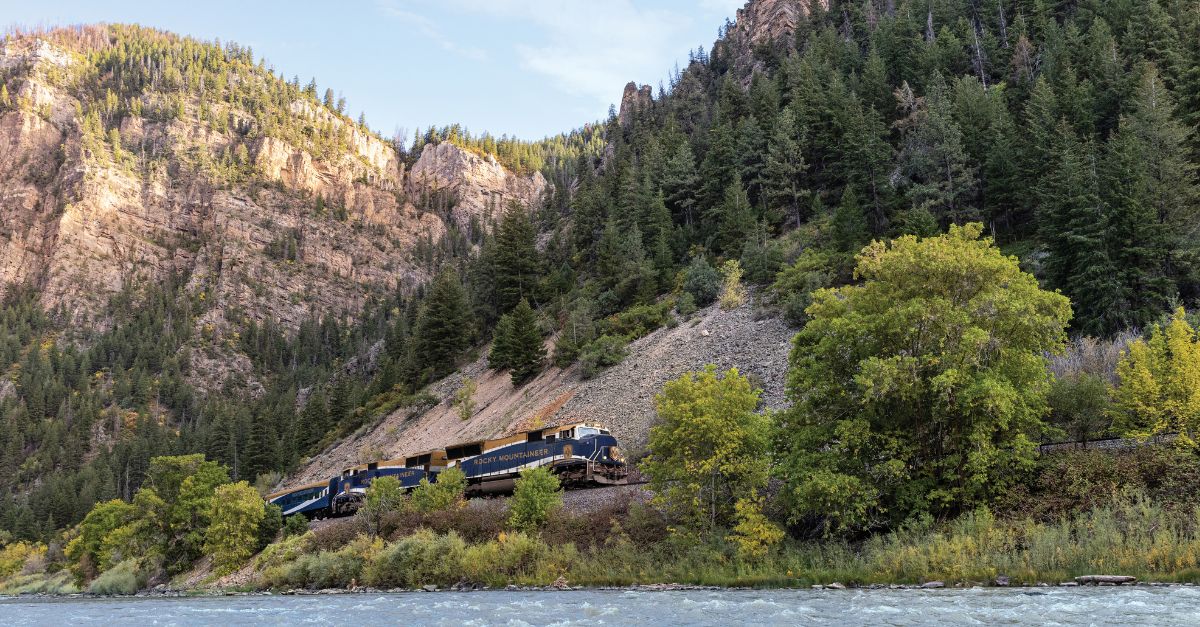Revel in the deserts, oases and mountains of this authentic Arabian enclave
Click here to download and save as a PDF
The sand feels soft, hot. I funnel it through my hands – fine specks of powder glide through like silk – and watch as the sun casts its ethereal tint over the surrounding dunes. I’m in Wahiba Sands, a 4,800-square-mile desert in eastern Oman, watching the sun set from the top of a dune, and I’m overwhelmed by the stillness of it all.
It’s silent, apart from a butterfly flapping its wings, a fly buzzing around my face and the faint, hollow din of a breeze. There’s a sense of purity in the smooth, billowing waves of sand that roll around me, empty and untouched bar the footprints I’ve just made.
It’s not only here that I’ve felt this palpable sense of peace. The whole country has an aura of pleasant quietness about it – nowhere feels crowded, and as we pass dramatic, craggy cliff faces and crumbling, abandoned villages, emerald-pooled wadis and gleaming, sandy beaches, we rarely encounter anyone else along the way.
It leaves me wondering why more don’t come to explore Oman’s culture-rich landscapes, where locals greet you with pots of fresh kahwa (Omani coffee) and piles of sweet dates, and where you’re given a glimpse into Arabia at its most authentic and traditional – all while sensing that times are changing, and that attitudes are, in many ways, liberalising.
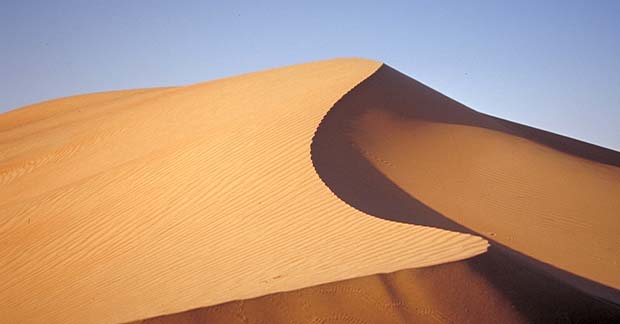
Desert adventures
Wahiba Sands (also known as Sharqiya Sands) is just one small chunk in Oman’s vast ocean of dunes – around 80% of the country’s landmass is made up of desert and valleys – but most visitors come here, thanks to the handy location.
Wahiba Sands is a three-hour drive from Muscat, and a cluster of luxurious desert camps draw those who don’t fancy slumming it with the type of wild camping you’d need in the Rub’ al Khali desert (or the Empty Quarter) that covers much of the south.
With sand so soft and silky it felt like snowboarding through fairy dust
I stayed at Desert Nights Camp (rates from £458 per night; omanhotels.com), where 30 canvas-roofed rooms across the sand boast en-suite bathrooms and queen-sized beds. Activities include quad-biking, sandboarding, camel riding and sunset dune-bashing.
Most guests opted for the last of these, which had us jolting up and down the steep, bumpy hills to watch the sun sink beneath a haze of burning orange. But my highlight was an optional sandboarding excursion, which involved gliding down huge, heart-thuddingly steep dunes with nobody else in sight.
With sand so soft and silky it felt like snowboarding through fairy dust, in a scene so quiet and empty it felt like time had stopped.
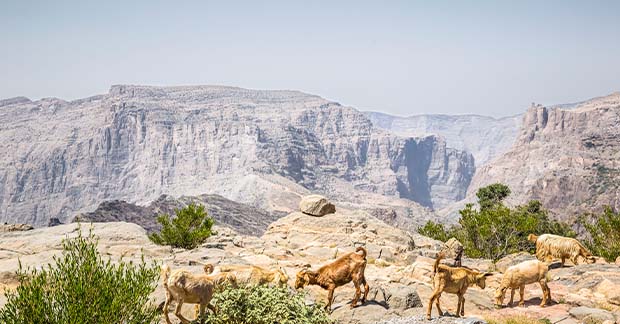
Bedouin life
Wahiba Sands isn’t only a playground for tourists. Bedouins have lived here for centuries, inhabiting the tumbling, honeycomb dunes, moving around from one place to the next to find water and grass for their camels and goats.
While this is gradually changing – “many Bedouin people now live and work in the cities, with modern houses provided by the government,” my guide told me – some still live traditionally, either moving around nomadically or settling in one place to farm.
I saddled up for a camel ride, thudding along the sun-baked sand
We visited a Bedouin hut on the edge of the desert to get a brief insight into the lives of the latter. Salma, who lives with eight other family members, greeted us with coffee and dates, as streams of light poured through the bamboo roof, illuminating handmade bags, scarves and rugs in intricate, colourful patterns.
Though the hut is open to visitors and groups, it felt anything but touristy, with no special show, pre-rehearsed talk or put-on-for-visitors pretence.
Instead, my guide translated as I asked Salma questions about the family’s livelihood – mainly based around farming, tourism and breeding and selling camels – before I saddled up for a camel ride, thudding along the sun-baked sand beneath a scorching, pool-blue sky.
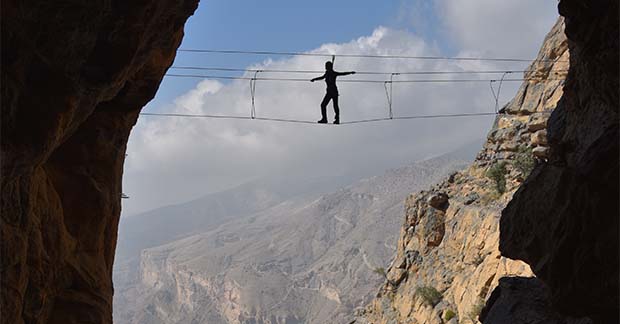
Rocky mountains
The desert is only half of Oman’s story, of course. Less than a three-hour drive from Wahiba Sands sit the Al Hajar Mountains.
At their heart is Jebel Akhdar (Green Mountain) – a 2,000-metre-high plateau where stepped terraces covered in date palms, banana plantations and pomegranate trees add patches of green to an otherwise bare, arid scene of brown-red rock, ridged and creased like the skin of an elephant.
It’s around a two-hour drive from Muscat so it can be done as a day trip, but for customers wanting to explore properly, suggest staying a few nights. There are accommodation options to suit most budgets, ranging from budget-friendly to blowout.
I stayed at Alila Jabal Akhdar (rates from £630 per night; alilahotels.com), which fits firmly in the second bracket with all the perks to warrant it – from its exceptional position on the mountainside, to its rustic, nature-inspired architecture, built from local Omani stone.
Horned mountain goats accompanied me along the way, blending into the backdrop in coats of sandy beige
There was an overriding sense of peace and quiet across the whole resort, but the real appeal for me lay in the wealth of adventures on hand. A number of hiking trails close by offered routes to suit all levels.
I opted for ‘Mirage in the Mountains’, which involved clambering up dusty, desert-like gravel paths and boulders to reach a pool of deep, marbled jade, originally built as a dam for the local villages.
Horned mountain goats accompanied me along the way, blending into the backdrop in coats of sandy beige, as birds rustled in parched bushes, and rocks crumbled into the valley.
Beyond hiking there was plenty more to do – not least a via ferrata climbing route that had more-intrepid guests circumventing the slippery, jagged mountain with a steel cable and harness.
I settled for the nightly stargazing session, which had me peering through a huge telescope to glimpse the glaring, pockmarked surface of the moon, as stars spun out in specks of glitter all around it.
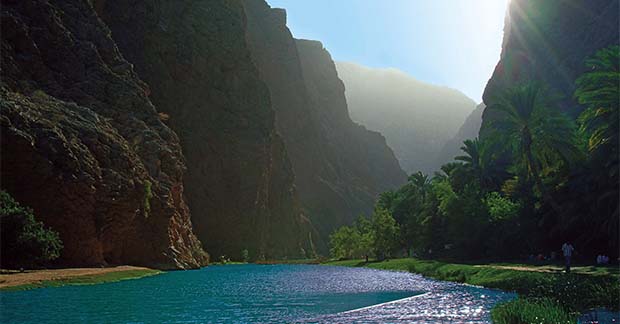
Wadi wonders
Perhaps the most glorious part of the mountains, though, are the wadis – winding river gorges where emerald waterfalls tumble in sparkling plumes. Locals and visitors flock to Wadi Bani Khalid, where a series of swimmable, glistening teal pools peep out from sand-coloured rock, leading to an ethereal cave.
But the standout for me was Wadi Shab, set deep inside a canyon and located a two-hour drive from Muscat. Here a small, wooden boat took us gliding across a mirror-flat stretch of jade to reach a jungle-like area of banana trees and date palms.
The scenery was so magical I felt like I’d stepped into a fairytale
Towering reddish canyon rocks soared up on either side as we made our way along the stream crisscrossing its trickling waters to reach a series of kaleidoscopic natural pools, glowing out from deep in the rocks.
From here we swam, hiked and clambered along to reach a waterfall, where the scenery was so magical I felt like I’d stepped into a fairytale. I must admit I’d got a little used to that feeling since arriving in this superlatively scenic country. With extraordinary moments at every turn, Oman should definitely be on your to-sell list, if it isn’t already.
Birkat Al Mouz
If clients have some time on their hands, suggest a stop at this crumbling, abandoned village on the way up to Jebel Akhdar. Believed to have been built more than 300 years ago, it was deserted around 50 years ago when the government (under the late, much-revered Sultan Qaboos) set about providing mountain villagers with new, modern houses and electricity.
Today it’s a cluster of dilapidated, sand-coloured houses built around a series of stone steps, which stands as a testament to how the country has changed over time, and it makes for a fascinating stop.
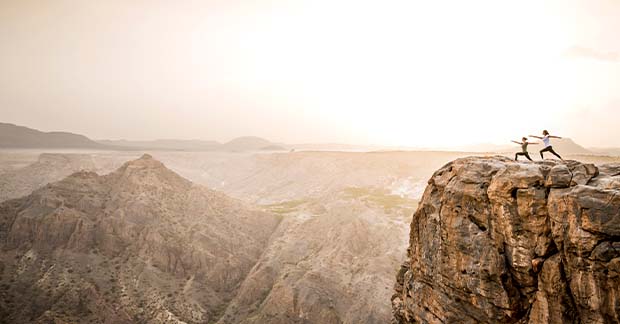
Book it
Cox & Kings’ eight-night Oman: An Arabian Odyssey tour includes flights, transfers and some meals. Prices start at £2,445.
coxandkingsagents.com
PICTURES: Oman Ministry of Tourism
Read more
Six of the best wow-factor honeymoon experiences
Wildlife and wild landscapes in Brazil’s Amazon Rainforest
Explore British Columbia’s open spaces and epic scenery

